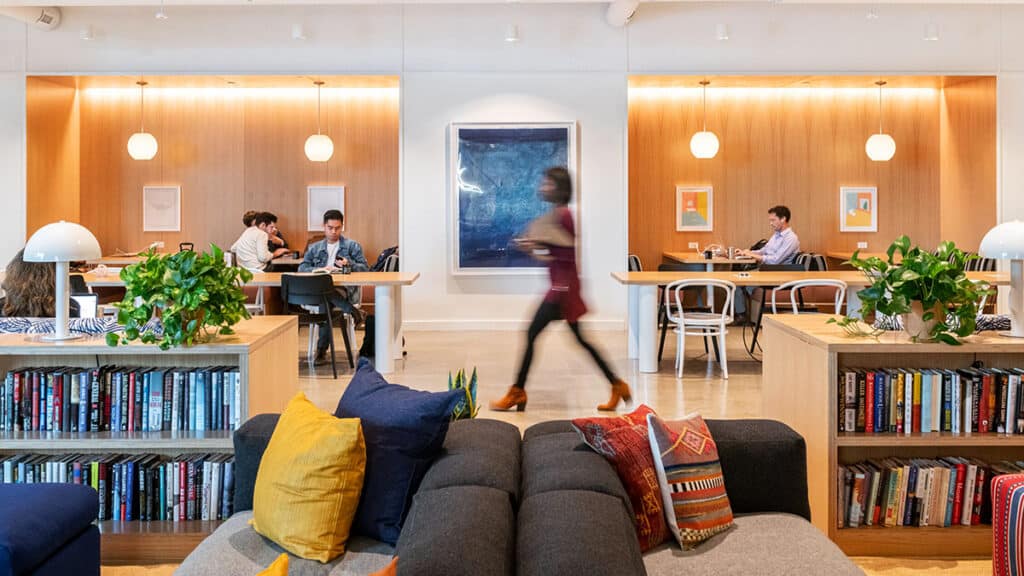Attitudes towards work have changed considerably in recent years, from the 80 million US citizens now engaged in flexible work schedules to the numerous smart technology integrations that have become commonplace across most industries, but how do these developments affect employees?
Studies suggest that modern office workers desire healthier workspaces that can contribute to lowered daily stress levels, as well as promote a more positive work environment, with 87% of surveyed employees requesting workspace benefits such as ergonomic seating and dedicated wellness areas to help in-office teams feel more engaged, productive and happy during the day.
To create a truly beneficial and smart workspace, however, employers and office managers must learn to implement these features alongside additional considerations in an intelligent manner that suits the style of their team. To help with this process, here’s the science behind smart office design.
Promote collaboration with open spaces
There’s plenty of research that illustrates how important collaboration and teamwork are in terms of improving emotional wellbeing and workplace positivity, with 37% of workers claiming that teamwork is essential to nurturing a high performing team. Traditional offices filled with cubicles and segregated desks will hinder natural collaboration between staff, so teams should look towards open plan and flexible seating arrangements.
By allowing employees from different teams to easily mingle and share ideas throughout the working day, employers can help to develop a strong workplace culture centered around collaboration and collective wellbeing. This flexible approach to office design can even have a measurable impact on productivity levels, with 77% of employees feeling more productive in open and flexible office spaces.
Utilize smart technology
Modern employers can utilize a wide variety of smart technologies to provide their employees with a much more convenient workplace environment. For example, access control devices or a key fob door entry system can be installed to manage property access, allowing staff to enter the property and make use of on-site amenities using touchless personalized credentials sent directly to their smartphones or using physical credentials such as key cards..
Additionally, office managers may wish to explore smart security technologies like traffic surveillance cameras which can be used to improve existing parking management systems by allowing employees to reserve personal parking spaces to cut down on wasted time at the end of their daily commutes.
HR teams can also make use of smart software tools such as performance trackers and employee recognition programs to ensure that workers feel respected and required in their roles, with studies showing that efforts to make staff feel happier in the workplace can improve productivity by 12%.
Introduce natural light and color
Smart office design isn’t all about seating arrangements and technology, in fact, there are a number of important psychological and health-related benefits employees can gain simply by introducing natural light and color into their workspaces. Studies even show that employees exposed to natural light whilst at work experience an 84% drop in health issues like headaches, blurred vision and eyestrain.
Employers should also consider utilizing color psychology to improve employee wellbeing. Exposure to different colors has been shown to influence humans on a subconscious level, meaning by simply changing the color scheme of certain rooms, employers can elicit different responses from their teams.
Examples of colors to use in smart office design include:
- Orange – Known to stimulate mental activity and reflect feelings of positivity, collaboration and happiness making this color a great choice for meeting rooms and shared spaces
- Blue – Promotes feelings of calm, stability and relaxation that could prove effective in break rooms and dedicated wellness areas to help employees destress during the workday
- White – Aids in signifying a clear, stable and open environment that can help employees to feel more focused when engaging with individual tasks and normal daily workflows
- Green – A natural color that symbolizes growth and balance, office spaces that feature green accents can help employees feel more grounded at work to relieve feelings of stress
Make use of plants and greenery
The average office worker spends around 1700 hours a year staring at a computer screen, with this level of exposure to artificial light contributing to a number of serious health issues including eyestrain and headaches as well as neck and shoulder pain. Alongside introducing more natural light into the office to combat this problem, employers should provide staff with plenty of green spaces to take regular breaks in.
Introducing plants and greenery into the office can also help to improve air quality by increasing the level of oxygen present in the building, a consideration that 72% of surveyed employees consider important in their workplace, ultimately helping to de-stress and reinvigorate office-based employees.
Summary
The environment that employees spend most of their time in has a major impact on their emotional and physical wellbeing, so employers should make efforts to create a welcoming workplace that’s able to promote positivity, collaboration and wellness, with these factors often contributing to measurable improvements in productivity and employee engagement.
Smart office design combines smart technologies, thoughtful space management and environmental psychology to achieve this goal, though to truly make the most of smart office concepts, employers and office managers should collaborate with their teams to design a space that works for everyone.
